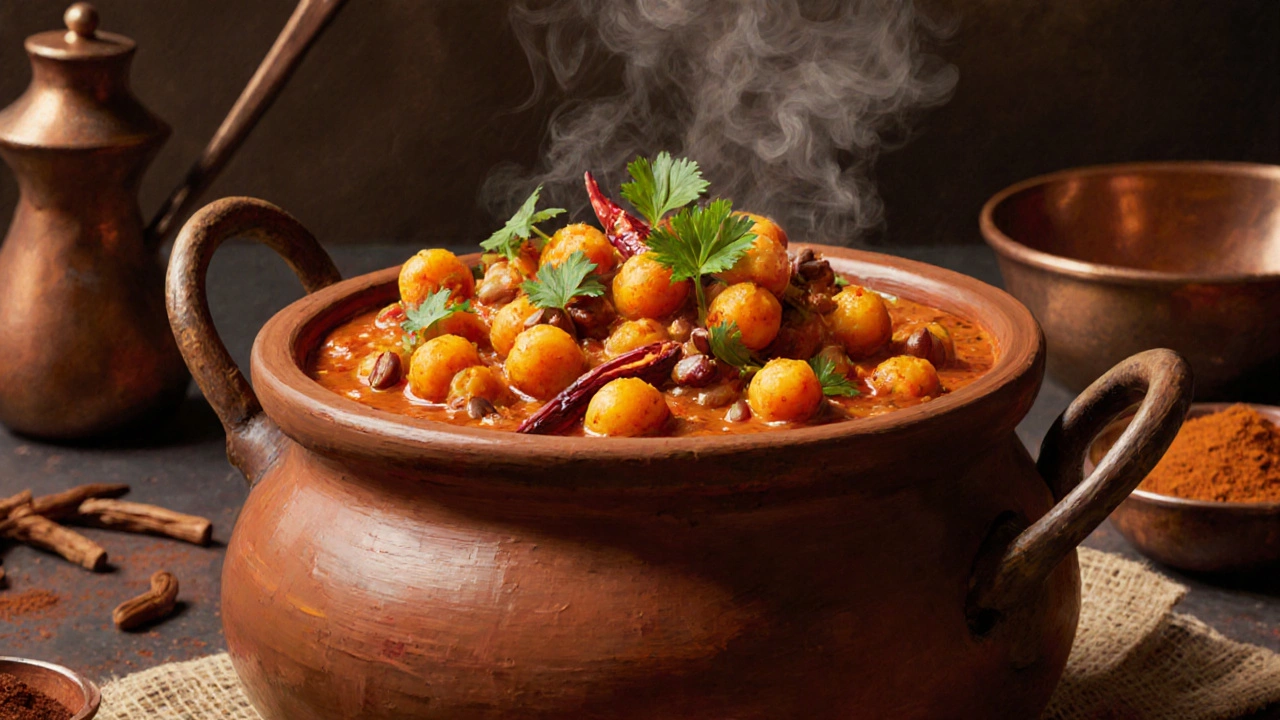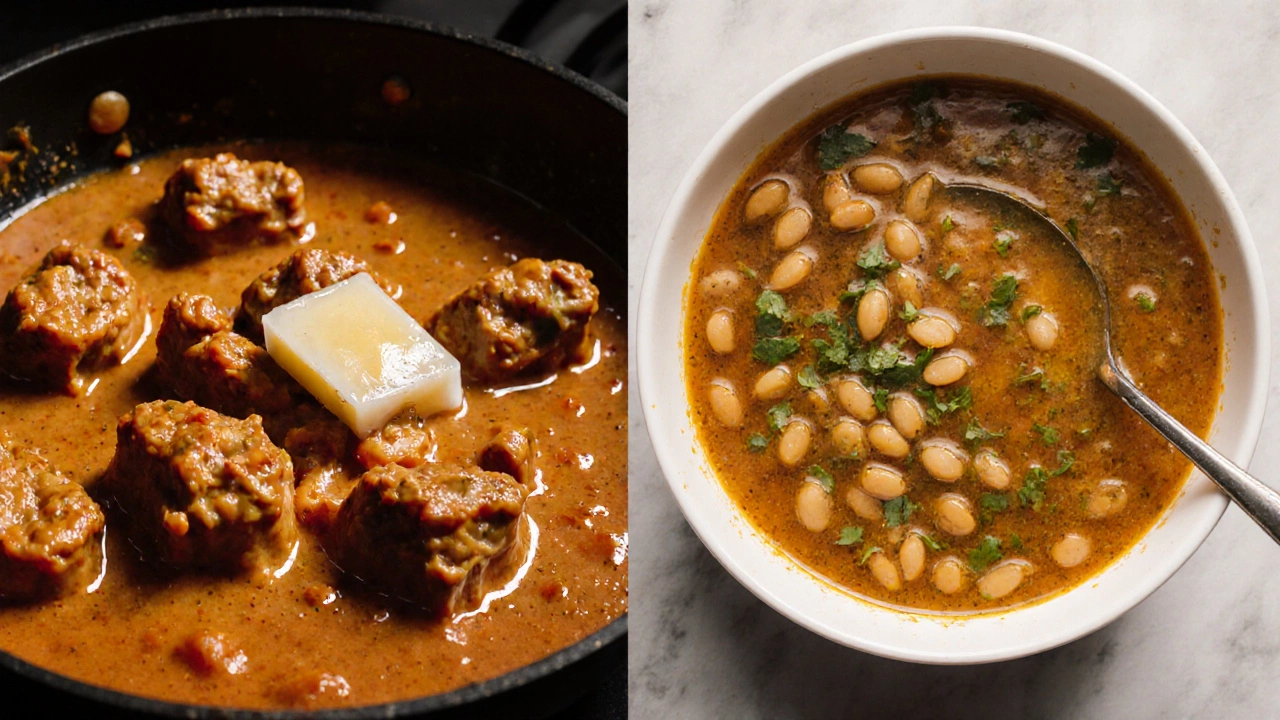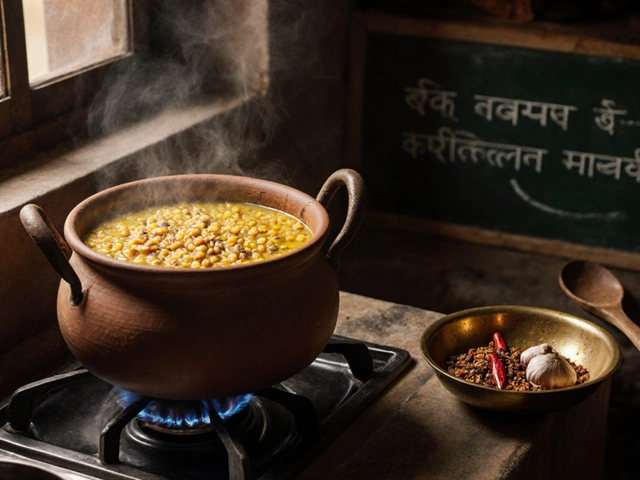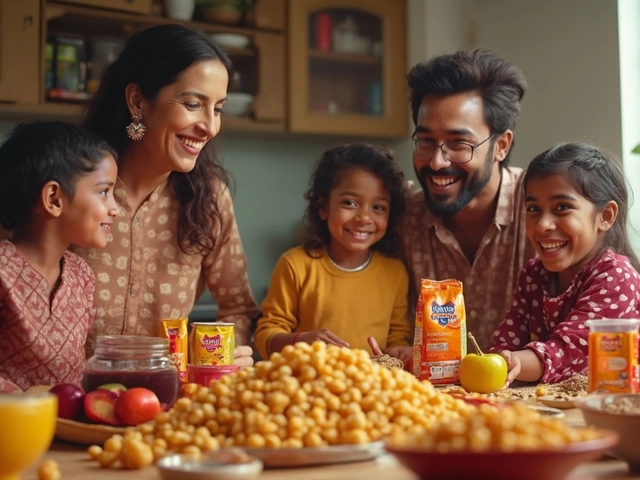Healthy Curry Finder
Find Your Healthiest Curry Option
Select your dietary preferences to see which curries align with your health goals.
Your Best Options
If you’ve ever stared at a menu full of creamy curries and wondered which one won’t sabotage your health goals, you’re not alone. Indian curries get a bad rap for being heavy, oily, and loaded with calories-but that’s not the whole story. Many traditional Indian curries are packed with vegetables, spices, and lean proteins, making them some of the most nutritious meals you can order. The key isn’t avoiding curry altogether-it’s knowing which ones actually support your health.
What Makes a Curry Healthy?
A healthy curry isn’t just about what’s missing-it’s about what’s there. The best ones use minimal oil, rely on whole spices instead of pastes with added sugar, and feature plenty of vegetables, legumes, or lean meat. Turmeric, cumin, coriander, and ginger aren’t just for flavor-they’re anti-inflammatory and help with digestion. Coconut milk? It’s fine in moderation, but cream, butter, and heavy cream are the real culprits behind the calorie spike.
Look for curries where the sauce is thin and broth-like, not thick and glossy. That gloss usually comes from cream or cashew paste. A good curry should taste bold, not greasy. The spices should shine, not the oil.
The Healthiest Indian Curry to Order: Tarka Dal
If you want one curry that’s packed with protein, fiber, and nutrients without a single drop of cream, go for tarka dal. Made from split red lentils (masoor dal), this dish simmers slowly with garlic, cumin, turmeric, and dried red chilies. The final touch-a quick fry of mustard seeds and curry leaves in a teaspoon of oil-is called the tarka, and it’s where the flavor explodes.
One cup of tarka dal has about 180 calories, 12 grams of protein, and 8 grams of fiber. That’s more fiber than a bowl of oatmeal. It’s naturally gluten-free, vegan, and low in fat. Most restaurants serve it with brown rice or whole wheat roti, making it a complete, balanced meal. Even if the kitchen uses a little extra oil, the lentils soak up what they need and leave the rest behind.
Don’t confuse tarka dal with dal makhani. The latter is cooked with butter, cream, and kidney beans, and can hit 400 calories per serving. Tarka dal? Clean, simple, and powerful.
Runner-Up: Chana Masala
If you’re craving something with more texture, chana masala is your next best bet. Made with chickpeas cooked in a tangy tomato-based sauce with onions, garlic, ginger, and spices like amchur (dry mango powder) and black salt, it’s a flavor bomb with zero dairy.
A single serving (about 1.5 cups) delivers 220 calories, 14 grams of protein, and 10 grams of fiber. The chickpeas keep you full for hours, and the tomatoes bring lycopene-a powerful antioxidant linked to heart health. Unlike many curries, chana masala doesn’t rely on thickening agents. The sauce is naturally reduced from simmering, so it’s lighter and more flavorful.
Pro tip: Ask for it without extra oil or ghee. Most places will happily make it with less if you ask. Some even use roasted cumin powder instead of frying spices in oil-ask if they can do that too.

What to Avoid: Butter Chicken and Korma
Butter chicken sounds indulgent because it is. The chicken is marinated in yogurt and spices, then cooked in a sauce made with butter, cream, tomato puree, and often sugar. One serving can easily hit 600 calories, with over 40 grams of fat. That’s more fat than a cheeseburger.
Same goes for korma. Even if it’s labeled as “mild,” it’s usually thickened with cashew paste, coconut milk, and heavy cream. A small bowl can contain 500+ calories and nearly 30 grams of saturated fat. The spices are buried under richness. You’re not tasting the food-you’re tasting the fat.
These dishes aren’t “bad.” They’re festive, celebratory meals. But if you’re eating curry for health, not for a special occasion, skip them.
Other Healthy Options Worth Trying
- Vegetable Jalfrezi - Stir-fried veggies with bell peppers, onions, tomatoes, and green chilies. The sauce is light, spicy, and oil-free if ordered right. High in vitamin C and antioxidants.
- Palak Paneer (light version) - Spinach and paneer curry. The spinach gives you iron and calcium, but watch out for the paneer. Ask for it made with low-fat paneer or request less cream. A small portion can be healthy if the sauce isn’t swimming in butter.
- Moong Dal Khichdi - Not technically a curry, but often served alongside one. Made from mung beans and rice, simmered with turmeric and cumin. It’s gentle on the stomach, easy to digest, and perfect if you’re recovering from a heavy meal or just want something clean.
How to Order Smart at an Indian Restaurant
Even the healthiest curry can be ruined by how it’s served. Here’s how to make sure you get the real deal:
- Ask for less oil - Say, “Can you make it with less ghee or butter?” Most chefs will accommodate.
- Skip the naan - White flour, fried in ghee, and brushed with butter. Swap it for brown rice, quinoa, or a whole wheat roti.
- Hold the raita if it’s creamy - Traditional raita is yogurt with cucumber and mint-great. But many restaurants use sour cream or add sugar. Ask what’s in it.
- Go for tomato-based or broth-based curries - They’re usually lighter than coconut or cream-based ones.
- Order veggies first - If you’re eating with others, start with a vegetable curry or dal. You’ll feel full faster and be less tempted by heavy dishes.

Why Spices Matter More Than You Think
Indian curries get their health boost from the spices, not just the ingredients. Turmeric contains curcumin, which studies show helps reduce inflammation and may support joint health. Cumin aids digestion and may help regulate blood sugar. Coriander is rich in antioxidants. Fenugreek seeds, often used in dal, have been shown to help lower cholesterol.
These aren’t just flavor enhancers-they’re medicine in a spice jar. When a curry is made fresh with whole spices ground on-site, the benefits are stronger. Pre-made pastes? They often contain added sugar, salt, and preservatives. Ask if they grind their own spices. If they say yes, you’re in good hands.
Real-World Example: What I Order in Cape Town
At my favorite Indian spot in Woodstock, I always order tarka dal with a side of brown rice and a small portion of vegetable jalfrezi. I skip the naan and ask for the dal without extra oil. The waiter knows me by now. Sometimes I add a side of cucumber salad with lemon and black salt. That’s it. I leave full, satisfied, and not weighed down.
One night I tried butter chicken because a friend insisted. I felt sluggish for hours. The next day, I went back to tarka dal-and my energy came back. That’s the difference.
Final Takeaway
The healthiest Indian curry isn’t the one with the fanciest name or the most colorful photo on the menu. It’s the one made with lentils, legumes, tomatoes, and spices-cooked with care and minimal fat. Tarka dal is the top choice. Chana masala is a close second. Everything else? Save it for special occasions.
Indian food isn’t about indulgence-it’s about balance. When you order smart, you don’t have to choose between flavor and health. You get both.
Is Indian curry good for weight loss?
Yes, if you choose the right kind. Curries like tarka dal and chana masala are high in protein and fiber, which help you feel full longer and reduce cravings. Avoid creamy, buttery versions like butter chicken or korma. Stick to tomato-based or broth-based curries with lentils, beans, or grilled chicken. Portion control matters too-one cup of curry with a half-cup of brown rice is plenty.
Can I eat curry every day?
Absolutely, if you focus on the healthier versions. Daily meals of tarka dal, moong dal khichdi, or vegetable jalfrezi are common in India and support long-term health. The spices have anti-inflammatory properties, and the fiber from lentils helps gut health. Just make sure you’re not eating the same curry every day-rotate with other vegetables and proteins to get a wider range of nutrients.
Is coconut milk curry healthy?
It depends. Coconut milk is high in saturated fat, but it’s also rich in medium-chain triglycerides (MCTs), which your body burns for energy instead of storing as fat. A small amount in a curry (like in Thai or South Indian dishes) is fine. But if the curry is thick, creamy, and made with full-fat coconut milk, it can add 300+ calories in one serving. Ask if they use light coconut milk or dilute it with water. Better yet, opt for tomato-based curries instead.
What’s better for health: chicken curry or vegetable curry?
Vegetable curries usually win, especially if they’re loaded with leafy greens, tomatoes, and legumes. They’re higher in fiber and lower in saturated fat. But lean chicken curry (like chicken jalfrezi or tikka masala made without cream) is still a great protein source. The key is the sauce. A chicken curry with a tomato-onion base and minimal oil is healthier than a vegetable curry swimming in coconut cream.
Does Indian curry have a lot of sodium?
It can. Many restaurants use salt liberally, and some pre-made spice blends contain added sodium. To reduce salt, ask for “less salt” when ordering. Also, skip the pickles and chutneys-they’re often loaded with salt and sugar. Stick to plain yogurt raita or fresh cucumber salad instead.
Are frozen or takeaway Indian curries healthy?
Most are not. Frozen curries often contain added sugar, preservatives, and hydrogenated oils to extend shelf life. Takeaway curries are usually cooked in large batches with extra oil and cream to make them taste richer. If you must buy pre-made, check the label: look for curries with fewer than five ingredients, no added sugar, and less than 500mg sodium per serving. Homemade tarka dal from dried lentils is always better.











